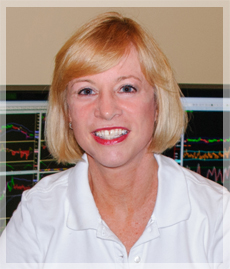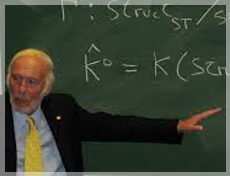Internal control is one of the key determinants of long-term trading success. The following article is based on the book Trade Your Way to Financial Freedom by Van Tharp.
The Importance of Internal Control
According to Van Tharp, internal control involves three key components:
-
Psychology (60% weight)
-
Position sizing (30% weight)
-
System development (10% weight)
In many ways, trading success is a result of internal control. However, most traders fail to recognize its significance.
-
Internal control is essential for effective portfolio risk management.
-
Traders who commit to developing internal control are the ones who ultimately succeed.
-
Most successful speculators have low win rates (35–50%), yet they remain profitable because their gains significantly outweigh their losses—this requires strong internal control.
-
Successful fundamental investors are often contrarians who wait patiently for the right opportunity before entering a position, which also demands internal control.
Read more: The Importance of Internal Control and Trading Discipline
Victor Sperandeo is an American commodity and derivatives trader, known as “Trader Vic”. Sperandeo traded, particularly in the energy and metals sectors. He is the CEO of Alpha Financial Technologies, LLC (AFT). It is said that until 1990, he had 18 profitable years in a row with an average return of 72%. Victor Sperandeo takes a trade only when the odds are in his favor. For example, he believes that a typical bullish swing on the Dow Jones Industrial is 20%. After the Dow has performed 20% the odds for further continuation are diminishing.
Victor Sperandeo's Background
Born in 1945, Victor Sperandeo, aka "Trader Vic," is a famous American trader known for his work in commodities and derivatives, especially energy and metals. With decades of experience, he’s respected for his skill, market insight, and risk management.
He is CEO of Alpha Financial Technologies, focusing on advanced trading strategies. Sperandeo has also authored books and shares valuable trading advice.
Victor Sperandeo’s Methods:
-
Follow Market Trends: Focus on long-term trends over short-term moves.
-
Manage Risk: Never risk too much on one trade; keep losses small.
-
Stay Flexible: Adapt your strategy as markets change.
-
Watch Supply & Demand: Price moves come from shifts in supply and demand.
-
Control Emotions: Stay disciplined to avoid costly mistakes.
His blend of technical and macroeconomic insight continues to guide traders worldwide.
Martin Zweig (1942–2013) was a renowned American stock market analyst, adviser, and investor. His investment approach combined macroeconomics, fundamental analysis, and market timing. In addition to his popular newsletter, The Zweig Forecast, he published two books:
- “Winning on Wall Street” (1986)
- “Winning With New IRAs” (1987)
The following advice is taken from his first book.
General Advice from Martin Zweig
- The major direction of the market is dominated by monetary considerations, primarily FED policy, and the movement of interest rates
- Once established, the trend typically lasts from one to three years.
- Combining to produce a monetary "climate" is loan demand in the economy, liquidity in the banking system, inflation or deflation, and, of course, policy decisions by the Federal Reserve
- To succeed in the market you must have discipline, flexibility, add patience. You have to wait for the tape to give its message before you buy or sell.
Peter Lynch is a legendary equity trader, author, and mutual fund manager. From 1977 to 1990, he achieved an average annual return of 29.2% while managing the Magellan Fund at Fidelity Investments.
Peter Lynch’s Background
Born in 1944, Peter Lynch is a legendary American investor, equity trader, author, and mutual fund manager, best known for his work at Fidelity Investments. He earned a reputation as one of the greatest fund managers of all time due to his exceptional performance managing the Magellan Fund from 1977 to 1990.
- During his 13-year tenure, Lynch achieved an astonishing average annual return of 29.2%, more than doubling the S&P 500's performance over the same period.
- Under his leadership, the fund grew from $18 million in assets under management to more than $14 billion
Lynch is widely admired for his pragmatic and accessible investment philosophy. His most famous principle—"invest in what you know"—encouraged individual investors to look for promising opportunities in their everyday lives, such as products and services they use or observe regularly. He believed that individual investors had an edge in spotting trends early, even before Wall Street analysts caught on.
Lynch retired from active fund management in 1990 at the age of 46, choosing to spend more time with his family and focus on philanthropic work. Despite stepping away from day-to-day investing, he remains an influential figure in the financial world.
Nassim Nicholas Taleb is a Lebanese-American mathematical statistician, author, risk analyst, and options trader. His work centers on uncertainty, randomness, and probability. He developed the risk-hedging technique known as 'Tail risk hedging' or 'Black Swan protection,' which aggregates portfolio exposure to guard against extreme market volatility. According to the Sunday Times, his 2007 book The Black Swan is one of the twelve most influential books since World War II.
Nassim Nicholas Taleb's Background
Born in 1960, Nassim Nicholas Taleb is a Lebanese-American scholar, former trader, and risk analyst known for redefining how we view uncertainty and randomness. His trading experience on Wall Street shaped his skepticism of traditional risk models.
- Taleb’s key idea is the Black Swan—rare, high-impact events often ignored by conventional thinking. His 2007 book The Black Swan highlights how underestimating randomness leads to major failures.
- He developed tail risk hedging, a strategy that protects portfolios from extreme market swings through asymmetric payoffs—small losses for large gains during crises.
- His Incerto series explores concepts like Antifragility (systems that grow stronger from disorder), Skin in the Game (risk accountability), and the Lindy Effect (longer life for enduring ideas).
- Though sometimes controversial, Taleb’s ideas influence finance, economics, and policy, advocating humility and robust systems in uncertain times.
Read more: Nassim Nicholas Taleb (Derivatives Trader & Author)
Andy Krieger is known as one of the most aggressive currency traders in the world, famously dubbed the conqueror of the New Zealand dollar. In 1986, he joined Bankers Trust, where he executed a legendary short trade against the New Zealand dollar. He later worked for George Soros. In 1992, Krieger published the book The Money Bazaar: Inside the Trillion-Dollar World of Currency Trading.
Andrew Krieger’s Background -The Man Who Broke the Kiwi
A master of leverage, nerves, and macro timing, Andy Krieger carved his name into financial lore with a single, ruthless trade. In 1987, at just 32 years old, he shorted the New Zealand dollar (NZD) so aggressively that it shook the currency—and its central bank—to the core. Dubbed “The Man Who Broke the Kiwi,” Krieger’s audacity revealed just how fragile even sovereign currencies could be in the face of modern trading firepower.
-
Joined Bankers Trust (1986): Quickly earned a reputation as the firm’s most aggressive currency options trader.
-
Post-Crash Opportunity: After the Black Monday stock crash in 1987, while most panicked, Krieger saw mispricing in global currencies—especially the overvalued Kiwi.
-
The Trade:
-
Used 400:1 leverage (an unheard-of level at the time).
-
Shorted hundreds of millions worth of NZD—more than the actual money supply in circulation.
-
The NZD plunged 5% in days.
-
Estimated profit: $300+ million for Bankers Trust.
-
The RBNZ intervened, and Krieger was reportedly banned from New Zealand for life (unofficially).
-
Linda Bradford Raschke is an American trader who primarily operates as a futures trader. She began her trading career in 1981, making markets in options. Later, she became a registered Commodity Trading Advisor (CTA) and founded LBR Asset Management.
Linda Bradford Raschke's Background
Born in 1959, Linda Bradford Raschke is a respected American trader known for her expertise in futures and options. With over 40 years of experience, she’s recognized for her disciplined, innovative trading and strong risk management.
She started as an options market maker in 1981, developing sharp skills in fast markets. Later, she became a registered Commodity Trading Advisor (CTA) and founded LBR Asset Management, managing funds with both systematic and discretionary strategies.
Raschke’s trading style blends price action, classic chart patterns, and momentum indicators. Her ability to adapt to various markets makes her a sought-after mentor and author, sharing knowledge on short-term, swing trading, and position sizing.
Trading Style and Contributions
Raschke is renowned for her technical trading methodologies, often combining:
-
Price action analysis
-
Classic chart patterns
-
Proprietary momentum indicators
As a trailblazer for women in trading, her emphasis on discipline, patience, and continuous learning continues to inspire traders worldwide.
James Harris Simons is an American mathematician and billionaire hedge fund manager. Known as the “Quant King,” he specializes in statistical analysis and systematic trading. His fund, Renaissance Technologies, employs quantitative techniques—using algorithms and advanced models—to exploit market inefficiencies.
James Simons Background
Born in 1938, James Harris "Jim" Simons is the elusive genius behind the most successful hedge fund in history. A Cold War codebreaker turned financial pioneer, Simons brought mathematics and machine learning to markets—producing returns so consistent they bordered on myth: 66% annually (before fees) for 30 years at his Medallion Fund.
-
Math Prodigy: PhD at 23, NSA cryptanalyst, and award-winning geometer.
-
Wall Street Detour (1978): Left academia, believing markets hid repeatable patterns.
-
Renaissance Technologies (1982): Built a fund staffed not by traders, but physicists, statisticians, and computer scientists.
-
1988–2018: Delivered 66% average annual returns before fees (39% after)—obliterating every benchmark.
-
"Black Box" Trading: Relied on hidden Markov models, signal processing, and statistical arbitrage.
Methods
-
Short-Term Focus: Held positions for seconds to days—harvested micro-inefficiencies before others noticed.
-
All Markets Welcome: Traded stocks, currencies, futures—anything liquid with a pattern.
-
Closed to Outsiders (2005): Limited to employees—profits became internal only.
-
Extreme Secrecy: Employees sign lifelong NDAs; strategies remain sealed in mystery.
Read more: James Simons (Systematic Trader & Hedge Fund Manager)














